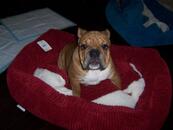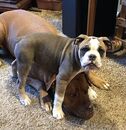OP
JenniferMac
New member
- Thread Starter
- Thread starter
- #16
Went to our regular vet today and they agreed with referral to specialist at UGA vet hospital with recommendation for a culture and biopsy. Should be receiving a call from UGA to schedule in the next couple of days. Fingers crossed they can get to the bottom of it.




